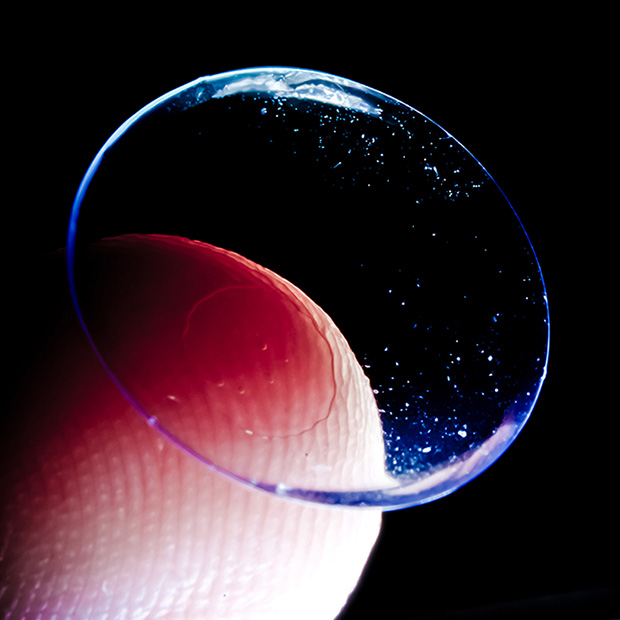Contact Lenses: More Than Meets The Eye

Contact lenses probably seem like a pretty recent invention, right?
It’s true that they’ve only become popular in recent decades, but you might be surprised to learn that Leonardo da Vinci first sketched the concept of contact lenses way back in 1508! His version involved submerging one’s head in a glass bowl of water, so it definitely needed work, but how did we get from there to the breathable silicone hydrogel contact lenses of today?
Contact Spectacles: Contacts Made Of Glass
In 1827, over three centuries after da Vinci’s initial sketch, Sir John Herschel came up with the idea of making a mold of a person’s cornea (the outer portion of the eye) in order to correct vision. However, the technology for making glass lenses thin enough to fit in the eye wouldn’t come along until 1888, when Adolf Fick was finally able to construct the first contact lens.
So why aren’t there fewer pairs of spectacles in old black-and-white photos if contacts were invented in the 1880s? Well, these prototype contact lenses weren’t exactly comfortable. They covered the entire front of the eye and allowed no oxygen to reach the cornea, so it only took a few hours before they became too painful to wear.
Hard Lenses: The Plastic Revolution
Contact lenses might never have become practical enough to appeal to glasses-wearers if it hadn’t been for the invention of plastic, which allowed lenses to be made lighter and more durable. Another key component was being able to successfully make molds of patients’ eyes, as Herschel had theorized. Dr. Dallos and Istvan Komàromy of Hungary perfected a method of doing just that.
However, these lenses still covered the entire eye. It wasn’t until 1948, when an English optical technician discovered that the lenses still worked if they covered a much smaller surface area, that contacts began to resemble the corneal lenses we’re used to today. A few more improvements quickly followed, making hard lenses very thin, shaped to the eye, and more comfortable.
Soft Lenses: Sight For Sore Eyes
Over the next couple of decades, hydrogels (more flexible plastics) were developed. By 1971, the first soft contact lenses gained FDA approval and hit the market. Hard lenses couldn’t beat soft lenses for comfort. Infection is always a risk with lenses that touch the eye, but the introduction of disposable lenses reduced this risk as well.
Soft lens technology has improved in the nearly fifty years since 1971, always seeking to improve breathability, safety, and comfort levels. The biggest recent breakthrough was silicone hydrogels, which are almost 100 percent breathable.
Watch this video to see how contact lenses are made:
[iframe https://www.youtube.com/embed/23xJN0Y4Umk?rel=0 620 349]
Let’s Find Your Perfect Contacts!
With the variety of contact lens options available today, it might seem difficult to choose the right ones for you, but that’s where we come in. We can match you with the perfect lenses for your circumstances and needs, so if we haven’t seen you in a while, schedule an appointment right away!